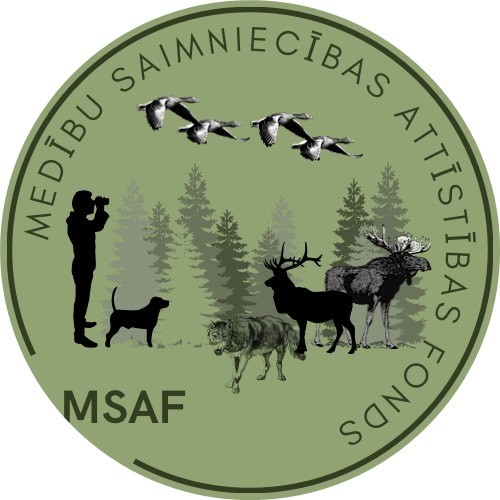Game Management Development Foundation agreement No. 23-00-S0MSF02-000003

The tasks of Study:
- From the hunted wolves, collect the reproductive organs of adult females, DNA samples for analysis, muscle tissue and diaphragm for trichinella testing, tusks for feeding studies and the root of a canine from wolves older than one year, maintaining the representativeness of the sample set to date of no less than 40% of the total number of hunted individuals.
- Carry out material processing and research in the laboratory, determining the exact age of the animals by the number of cementum layers of the canine root and the fertility of females by the number of placental spots in the uterine walls and the amount of yolk bodies in the ovaries.
- To perform DNA analysis and interpretation of the results of population genetic parameters and kinship indicators for samples collected from hunted wolves.
- Conduct DNA analysis of samples collected at damage sites from domestic animals where attacks have occurred to determine the species of predator.
- To be carried out in 2022/2023 analysis of the data (demography, feeding, parasites) collected during the hunting season of 2018 and their comparison with the data obtained during the entire research so far.
- Provide scientifically evaluated information to the State Forestry Service, which is responsible for monitoring hunting, training of young hunters and hunting leaders and determining the permissible amount of wolf hunting, and communication and data exchange with research work partners in neighboring countries for the use of comparable indicators in assessing the state of the Baltic population.
- Analyze the results of the survey "Survey of attitudes towards large carnivores in Baltic countries" to clarify the attitudes and opinions of public interest groups.
- Perform data analysis and interpretation of results on the influence of factors on the amount of damage caused to agriculture, the livestock protection means used and the location, time and quantity of wolves hunted in the damage areas.
- To inform the public in the media and in communication with users of hunting rights about the research and its results.